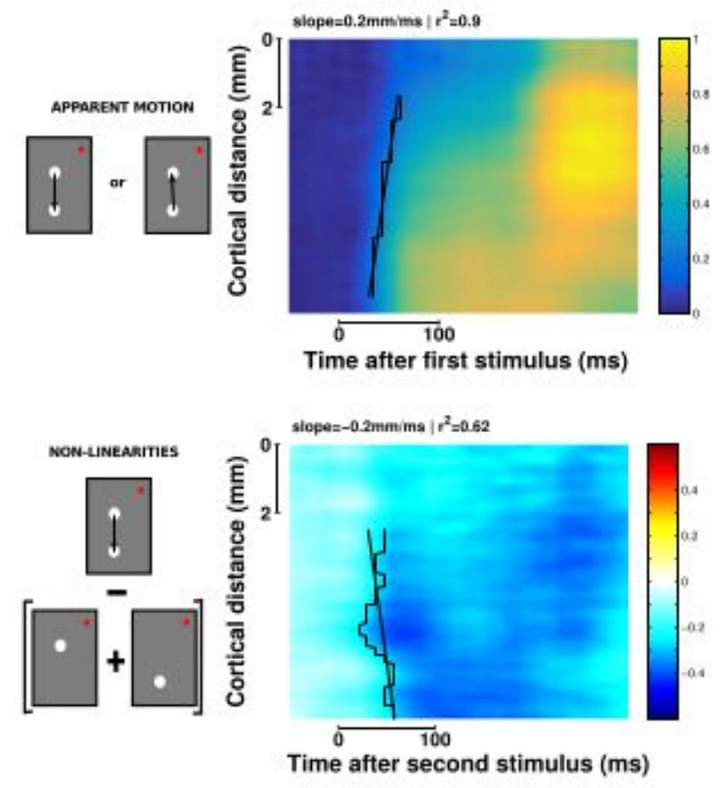Suppressive waves disambiguate the representation of long-range apparent motion in awake monkey V1

Abstract
The ``apparent motion’’ illusion is evoked when stationary stimuli are successively flashed in spatially separated positions. It depends on the precise spatial and temporal separations of the stimuli. For large spatiotemporal separation, the long-range apparent motion (lrAM), it remains unclear how the visual system computes unambiguous motion signals. Here we investigated whether intracortical interactions within retinotopic maps could shape a global motion representation at the level of V1 population in response to a lrAM. In fixating monkeys, voltage-sensitive dye imaging revealed the emergence of a spatio-temporal representation of the motion trajectory at the scale of V1 population activity, shaped by systematic backward suppressive waves. We show that these waves are the expected emergent property of a recurrent gain control fed by the horizontal intra-cortical network. Such non-linearities explain away ambiguous correspondence problems of the stimulus along the motion path, preformating V1 population response for an optimal read-out by downstream areas.